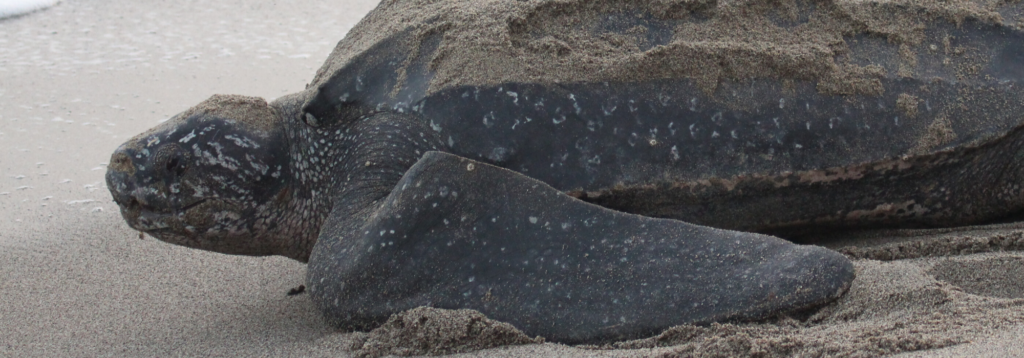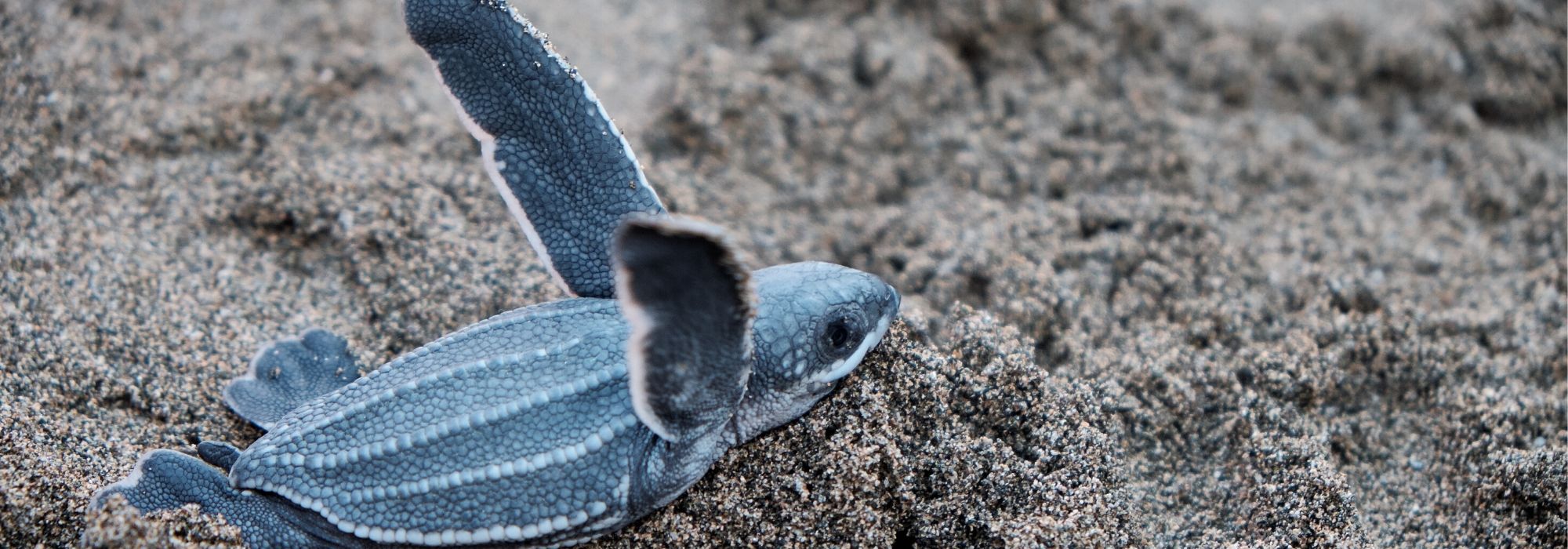REPTILES SPECIES
LEATHERBACK SEA TURTLE
DERMOCHELYS CORIACEA
The Leatherback sea turtle is the largest turtle species in the world. They can grow to over 6 feet and weigh up to 2,000 pounds. The Leatherback sea turtle’s biology has not changed in millions of years, in fact, they have had the same appearance as they do today since the existence of the dinosaurs!
Leatherback sea turtles are migratory, and undertake their longest migrations between breeding and feeding areas, averaging 3,700 miles each way. The female will lay from 7 to 11 nests per season, each averaging around 73 fertilized eggs. Despite these promising numbers, estimate put the number of these young that will make it to adulthood between 1 in 1,000 and 1 in 10,000.

Why do they matter?
Research has shown that Leatherback sea turtles provides a vital source of income for ecotourism in coastal communities, especially throughout the Coral Triangle. The profit that is generated from sea turtle ecotourism is actually three times the income by selling sea turtle parts (meat, eggs, and shells). Moreover, Leatherback sea turtles also hold significance in many coastal cultures throughout the world and additionally are a vital part of the ecosystems they inhabit, where they regulate fouling organisms and promote further growth.
The incidental capture in fishing gear and harvest of eggs and adults have lead to significant declines in Leatherback populations.
Leatherback sea turtles face threats from both nesting beaches and the marine environment. They were counted as endangered species since 1970 under the Endangered Species Conservation Act, but populations continue to decline. The Pacific Leatherback is considered to be most at risk, however according to the International Union for the Conservation of Nature, the Leatherback is vulnerable. It is more important now to protect these species to discourage their further decline into critically endangered populations.

Will climate change affect the leatherback sea turtle? Yes.
Climate change impacts Leatherback sea turtle in multiple ways. Rising temperatures results in warmer shores where Leatherbacks lay their eggs. Surprisingly, this can determine the gender of Leatherbacks and in this case the increasing temperature will cause a greater proportion of females to be hatched, effectively destabilizing future populations. Furthermore, with rising sea levels in addition to more frequent and long lasting storms, newborn turtles and eggs are more likely to be swept away into tides they are unable to withstand.